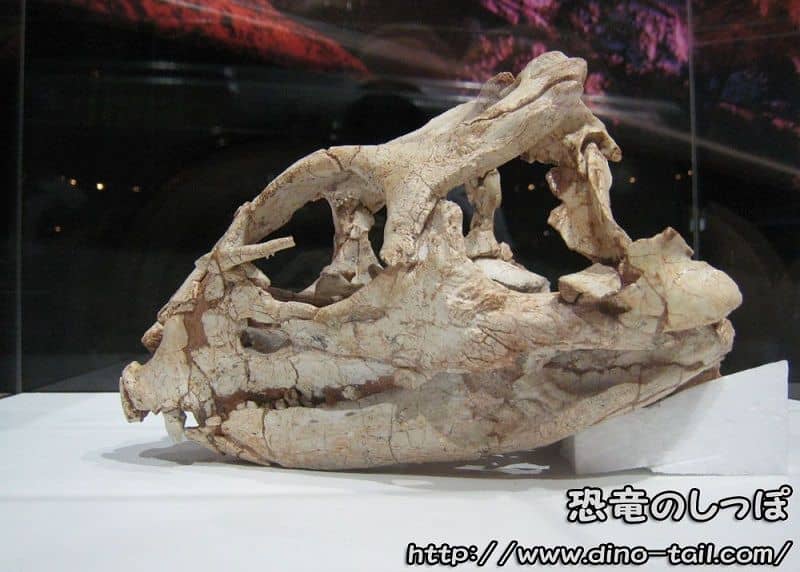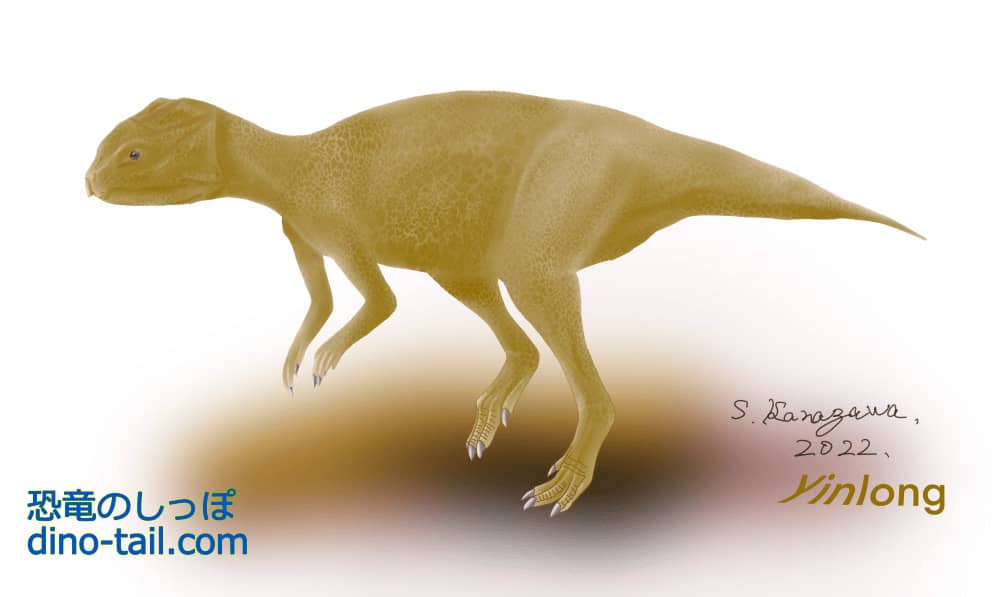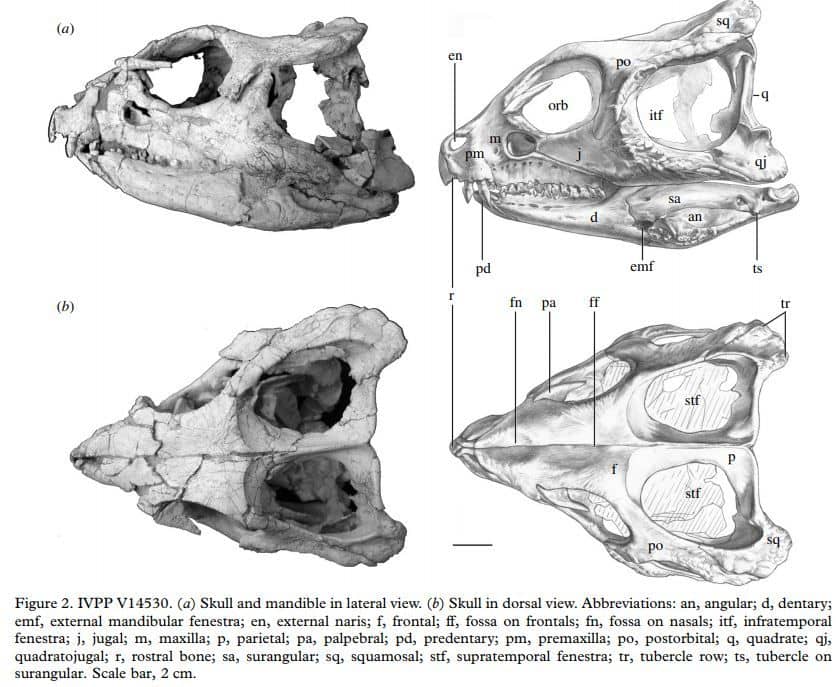About Yinlong
| Scientific Name (Genus) | Yinlong |
| Meaning of Name |
Hidden Dragon
From the movie "Crouching Tiger, Hidden Dragon" |
| Classification | Ornithischia, Marginocephalia (Ceratopsia, Chaoyangsauridae) |
| Total Length | Approx. 1.2m |
| Diet | Herbivorous (possibly omnivorous) |
| Period | Late Jurassic |
| Species | Yinlong downsi |
| Year of Paper Publication | 2006 |
| Genus Name Publication |
A basal ceratopsian with transitional features from the Late Jurassic of northwestern China.
Proceedings of the Royal Society B: Biological Sciences, 273. by Xu, X., Forster, C.A., Clark, J.M., and Mo, J. 2006. |
Characteristics

Yinlong is one of the earliest ceratopsians that appeared in Late Jurassic Asia.
Its name, meaning 'hidden dragon,' is derived from the movie 'Crouching Tiger, Hidden Dragon,' which was filmed near the discovery site.
The discovery of Yinlong in 2006 became a crucial point in understanding the early evolution of ceratopsians.

Yinlong's skull was a surprising mosaic of features, making it a 'missing link' in the evolution of Marginocephalia (the group including ceratopsians and pachycephalosaurs).
- Ceratopsian Feature: At the tip of its upper jaw, it had a rostral bone , a unique feature of ceratopsians that would later be seen in dinosaurs like Triceratops. This indicates that Yinlong was one of the earliest members of the ceratopsian lineage.
- Pachycephalosaur Feature: On the other hand, the squamosal bone at the back of its skull had knob-like ornamentation similar to that seen in pachycephalosaurs like Pachycephalosaurus.
- Even Older Ancestral Feature: Furthermore, it possessed long, sharp, tusk-like teeth, similar to those of more primitive ornithischians like Heterodontosaurus.
These features provided strong evidence that ceratopsians and pachycephalosaurs are very closely related and evolved from a common ancestor.

Additionally, gastroliths (stomach stones) were found where Yinlong's stomach would have been. This suggests it swallowed stones to help grind up tough plant material for digestion. However, its teeth were not purely those of an herbivore, retaining some sharp parts. This leads to the belief that while Yinlong primarily ate plants, it was likely omnivorous, also consuming insects and small animals.
Publication
The first Yinlong fossil was discovered in 2004 in the Shishugou Formation in Xinjiang, China. It was a well-preserved skull fossil, cataloged under the specimen number IVPP V14530.

Source: A basal ceratopsian with transitional features from the Late Jurassic of northwestern China. Proceedings of the Royal Society B: Biological Sciences, 273. by Xu, X., Forster, C.A., Clark, J.M., and Mo, J. 2006.
